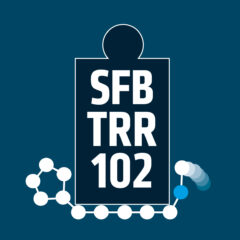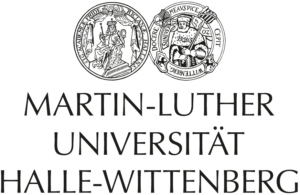Structural characterisation of tetra-PEG tetra-PCL amphiphilic end-linked polymer model networks
by Lucas Löser
and
Kinetics of Interface-Induced Polymer Crystallization
by Marthinus van Niekerk
date: March 21, 2023
time: 14.30
location: seminar room 1.12, von-Danckelmann-Platz 3, 06120 Halle + zoom (hybrid seminar)
Structural characterisation of tetra-PEG tetra-PCL amphiphilic end-linked polymer model networks
by Lucas Löser
A new approach for the synthesis of model-like amphiphilic co-networks is introduced, and their structure is analysed by static 1H time- domain nuclear magnetic resonance (NMR) methods [1]. The hetero- complementary end-linking reaction of two well-defined star precursors [2] is implemented to obtain amphiphilic gels. We link PEG stars with hydrophobic poly-e-caprolactone stars (tetra-PCL), resulting in the formation of an amphiphilic network. NMR is shown to be capable of distinguishing different chain species in the swollen PEG- PCL networks, allowing quantification of network connectivity defects arising from the end-linking reaction, as well as accurate quantification of inelastic material. The mesh size of the networks is studied by Pulsed-Field Gradient (PFG) NMR, using dextrans as hydrophilic probe molecules for the network swollen in selective solvents. Furthermore, we performed measurements using small-angle x-ray scattering for information on the properties of the selectively swollen networks, e.g., estimates for the correlation length of PCL domains.
[1] Bunk et al.; Macromolecules 2022, 55, (15), 6573-6589
[2] Sakai, T. et al.; Macromolecules 2008, 41, (14), 5379-5384
Kinetics of Interface-Induced Polymer Crystallization
by Marthinus van Niekerk
Initiation of crystallization at an interface by either heterogeneous nucleation or prefreezing presents kinetics of crystal formation surpassing that of homogeneous nucleation in the bulk. Prefreezing, which leads to a crystalline layer of well-defined thickness formed above the equilibrium melting temperature at the interface between a substrate and a polymer melt, has been studied extensively in our group for PCL and PE on both MoS2 and HOPG. [1] This has led to the phenomenological theory of first order prefreezing. Experiments with PCL on graphene have proven that prefreezing greatly enhances crystallization kinetics to the extent that supercooling of only a few degrees Celsius below the equilibrium melting point is required to crystallize the polymer material. [2] Heterogeneous nucleation, which lowers the thermodynamic energy barrier to nucleation w.r.t. homogeneous nucleation, also leads to decreased supercooling. [3] This phenomenon can be studied by non-isothermal droplet cooling experiments whereby a system of dewetted polymer droplets on a substrate is analyzed by in-situ polarized light optical microscopy. Samples are cooled at a well-defined rate from above the melting temperature while successive crystallization of droplets is analyzed. In particular, a comparison of PCL droplets on different substrates will lead to interesting conclusions regarding the effect of surface properties on the kinetics and mode of interface-induced crystallization. Research on polymer crystallization at interfaces is of a fundamental nature, but has consequences for the field of polymer processing.
[1] Tariq, M., Dolynchuk, O., Thurn-Albrecht, T.. J. Phys. Chem. C 2020, 124 (48), 26184-26192.
[2] Tariq, M.. Thermodynamics and Kinetics of Interface-Induced Crystallization. Martin-Luther-Universität Halle-Wittenberg, Dissertation, 2021.
[3] Tariq, M., Thurn-Albrecht, T., Dolynchuk, O.. Crystals 2021, 11 (8), 924.




